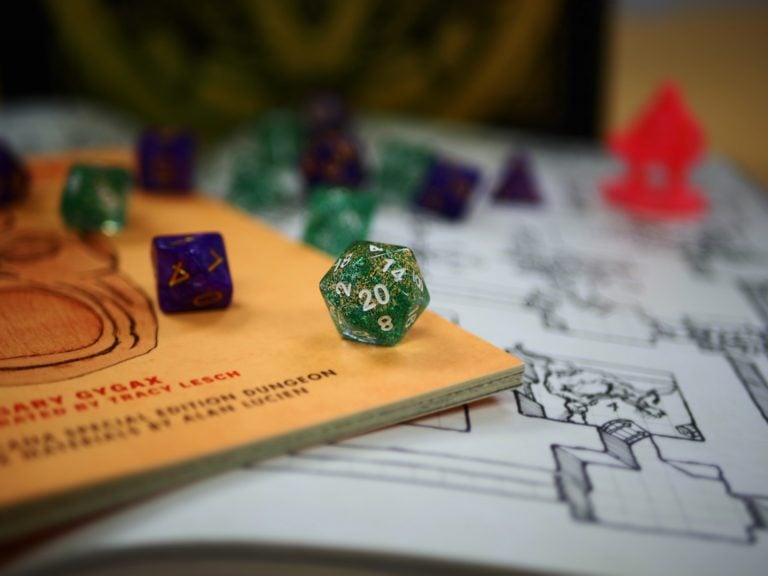Light 5E Guide | Attributes, Pros, Cons, and Uses
We have seen the Light, and we promise you will too after reading throughout this Light Spell Breakdown! This is one of our favorite spells, and has even cracked our Top 5 Best Cantrips in the 5th Edition of D&D. In this article, we will go over the pros, cons, and situational uses for the Cantrip Light. So put on your shades, as we are now jumping into the Light 5E Guide!
Light 5E Guide
- School: Evocation
- Level: Cantrip
- Casting Time: One Action
- Range: Touch
- Components: Verbal, Material (a firefly or phosphorescent moss)
- Duration: One Hour
- Class: Bard, Cleric, Sorcerer, Wizard
One object that you touch sheds a bright light that will last for the duration of the spell. The light will illuminate a twenty-foot area, and dim an additional twenty feet beyond that. The castor dictates the color of the light that will emit from the source. The object you touch cannot be longer than ten feet. Completely covering the object with something opaque will block the light from performing its function.

If you attempt to cast this spell on an object that is being worn or held by a hostile character, that character can prevent this spell from succeeding by rolling a successful Dexterity Saving Throw. To make a Dexterity Saving Throw, use the following formula:
1d20 + Their Dexterity Modifier
The spell will end if you cast it again or if you dismiss it as an action.
Pros
Light is one of my favorite spells because there is so much utility tagged into such a simple effect. Off the top of my head, here are five examples of what you can do with light:
- Find your way around a dark area.
- Light up your campsite instead of using or finding material.
- Cast it on an object and toss it so you throw off enemies.
- Blind an enemy while in the middle of a fight.
- Hang an item with Light around a small animal’s neck so the light can move.
And did I mention that Light is a cantrip? Because it is! In fact, it’s one of the best cleric cantrips available, along with other classes. Being a Cantrip in fifth edition means that you do not have to prepare to use this spell, thus, you can cast it freely.
Cons
While you can freely cast Light because it is a Cantrip, you still need to have the proper materials in order to think about resolving the spell. In order to cast Light, you will need to use a firefly or some phosphorescent moss. It will be up to your Dungeon Master to determine how easy it is for you to find these items, but you should also think about how you might be able to find them too. A quick google search reveals that you can find phosphorescent moss in dark, damp areas like an underground grotto or a cavern. Fireflies are most commonly found in open fields, forest edges, or riversides late at night. If your Dungeon Master pays attention to details, I would definitely keep this information handy.
If the spell Darkness is active in the location that you are currently casting Light in, you will only light the area that is not affected by the Darkness spell. Darkness is a second level spell, thus, you cannot use a spell that is of a lower level to cancel out its effects.
The other big issue with using Light is that everyone around you will have a good idea as to where you are. If you are using Light in place of a torch or a campfire, anything within a forty-foot radius of you will know that there is at least once magic-user in the area. This would be terrible if you are trying to run from someone! You can mitigate the upcoming disaster if you and your team perform an investigation check before you cast the spell. To perform an investigation check, please use the following formula:
1d20 + Intelligence Modifier + Investigation Ranks
While you would assume that using the Light spell will help with the Investigation, that fact might not matter if you are calling direct attention to yourself in the first place. Mind you, you do not have to use your eyes while you are Investigation. Your party could feel around the location for traps with a stick, listen out for any disturbances in the distance, or toss items to see if anything is disturbed. Safety should be your team’s number one priority, and casting Light could jeopardize that.
When Should You Use Light
I cannot stress how useful this spell really is. You can use it offensively, defensively, and as a basic survival tool. I already listed ten uses for Light above in the Pros, but I will list another five under this section just to stress just how useful this spell is.
- Blind an enemy as they are approaching you to hopefully give you an attack of opportunity.
- Light up an enemy’s piece of equipment to force them to fight blinded or take off the item.
- Leave the bright object in a trap so you can catch an enemy.
- Help a fellow traveler by casting the spell on an item of their choice.
- Trick an enemy with a shadow puppet
When Better Options Are Available
If you are worried about an enemy finding your location from when you are casting Light, you can use a Daylight spell to practically do the same thing. Daylight is a third level spell that can brighten up an area of sixty-feet, and dim an additional sixty-feet beyond that. And because Daylight is a level three spell, it will cancel out a Darkness spell that is lingering in the same area.
That wraps our Light 5E rundown. Need more spells? See our Druidcraft 5E guide here at Nerds and Scoundrels!






